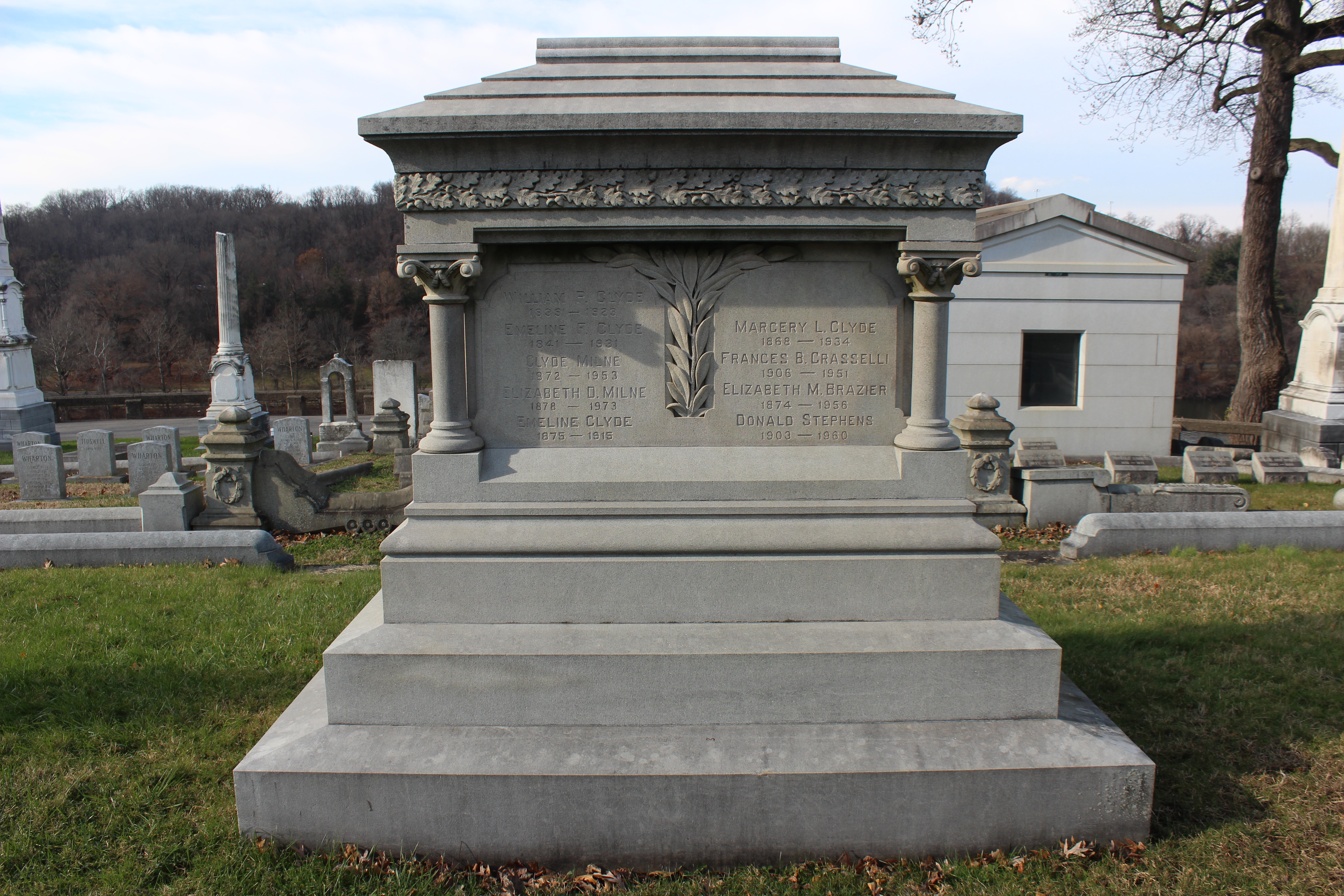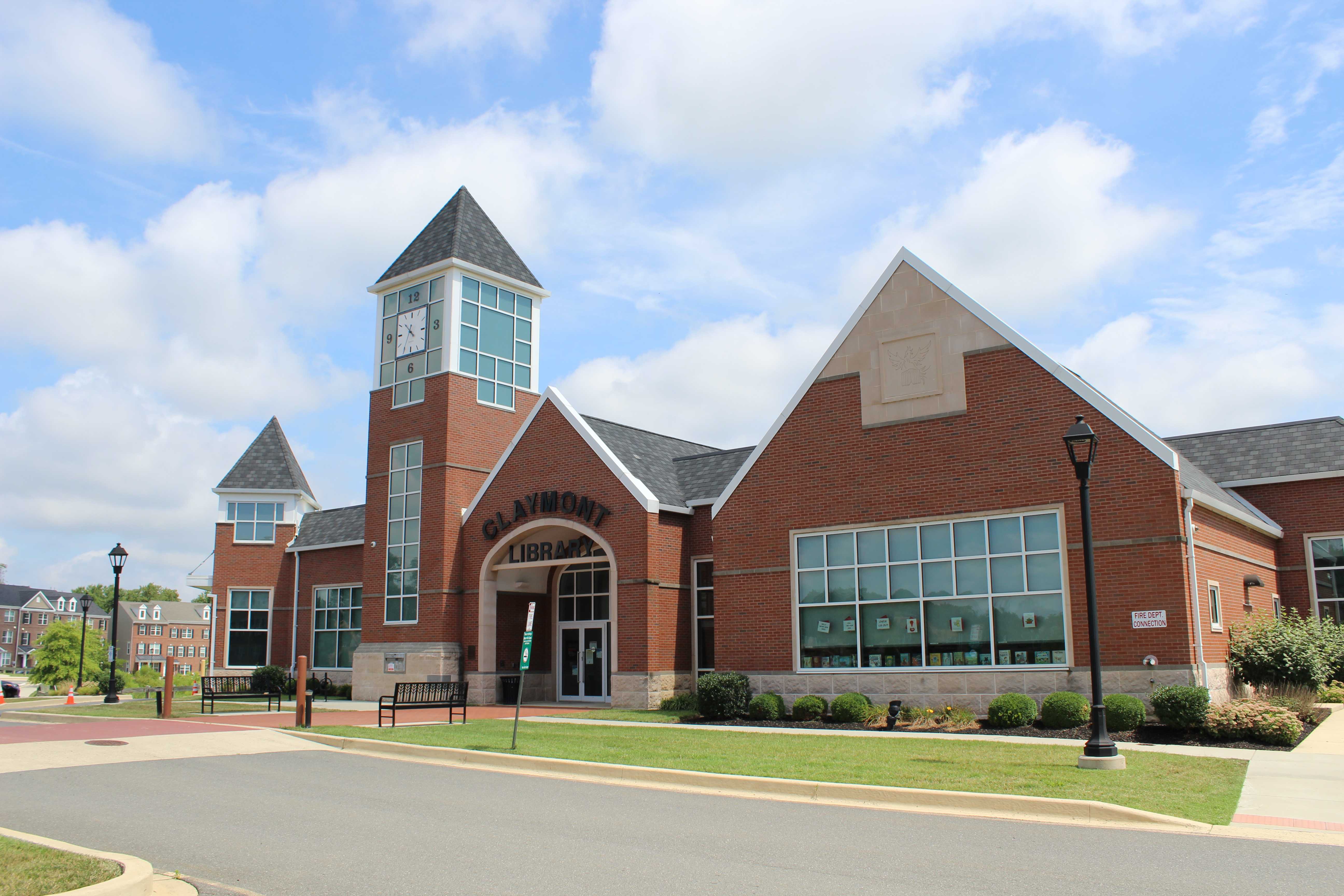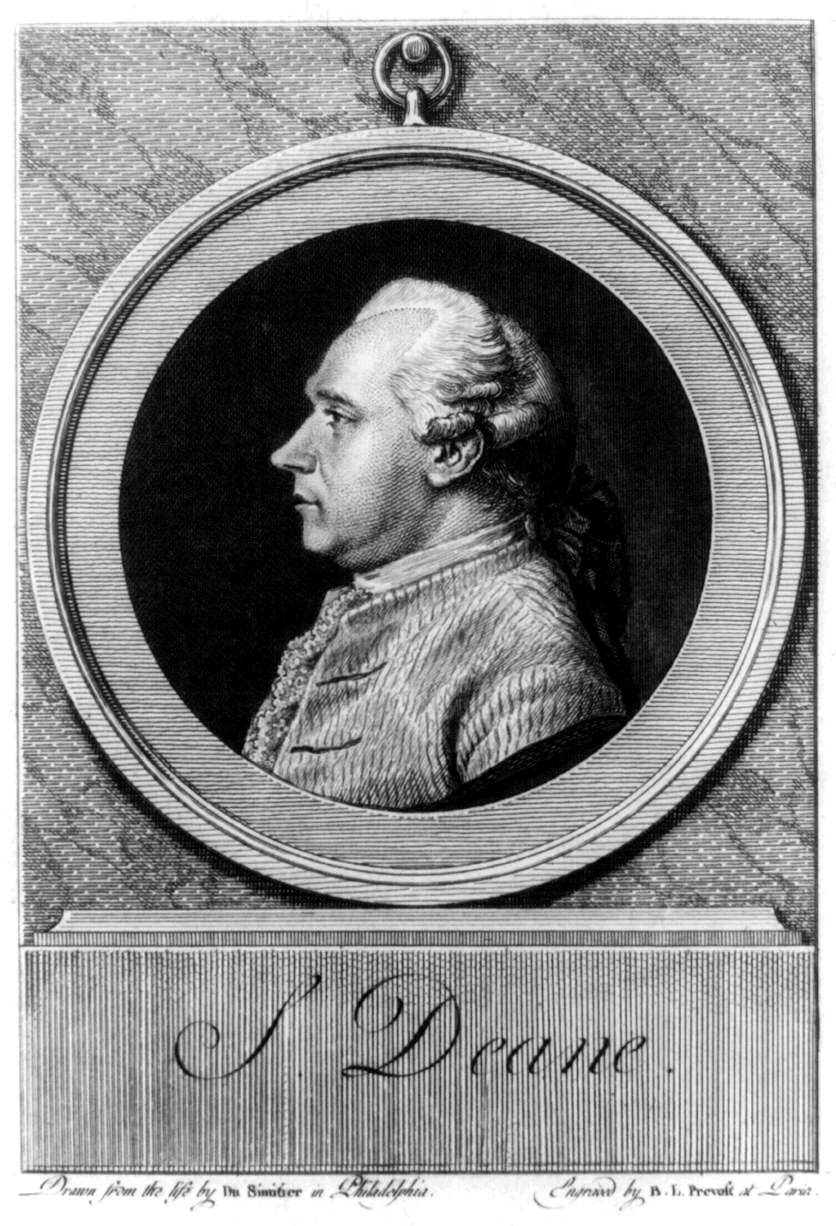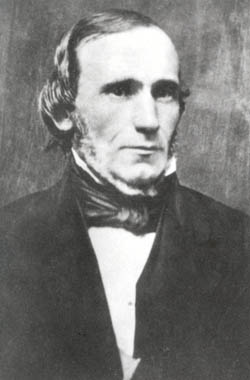|
William P. Clyde
William Pancoast Clyde (October 11, 1839 – November 18, 1923) was an American businessman who was the owner and president of the Clyde Steamship Company, a steamship and canal boat mercantile and passenger transportation business founded by his father Thomas Clyde in 1844. Early life and education Clyde was born on October 11, 1839 in Claymont, Delaware. He attended Trinity College in Hartford, Connecticut but after the outbreak of the American Civil War, he left his studies to join the Union Army as part of the Philadelphia Grey Reserves. He eventually graduated from Trinity College in 1862 with a Masters of Arts degree. Career He took over control of his father's shipping business in 1861. In 1865 he became president of the Pacific Mail Steamship Company and dominated American shipping on the Pacific coast as well as transportation on the Panama Canal Railway in Central America. He was active in the development of railroad in the southern United States and was the own ... [...More Info...] [...Related Items...] OR: [Wikipedia] [Google] [Baidu] |
Claymont, Delaware
Claymont is a census-designated place (CDP) in New Castle County, Delaware. The estimated 2017 population of the 19703 ZIP code, which Claymont encompasses, was 15,292. History The community now known as Claymont started on the banks of Naamans Creek where it empties into the Delaware River. This once rich ecosystem has been occupied steadily since before 1200 A.D. and has undergone numerous cultural and economic changes, most of which are still evident in the architecture and living patterns of the community today. The first residents were aboriginal Indians of the Middle Woodland period (1100-1600 B.C.). Evidence of these early dwellers has been found along both sides of Naamans Creek. The Dutch named the creek and settlement after the Chief of the Lenape Indians who occupied the region. The settlement grew rapidly from the 17th century through the 20th century, first with gristmills, farms, and related ancillary industries, and later with lumber mills, a steel mill, and a chemic ... [...More Info...] [...Related Items...] OR: [Wikipedia] [Google] [Baidu] |
Coal Mining
Coal mining is the process of extracting coal from the ground. Coal is valued for its energy content and since the 1880s has been widely used to generate electricity. Steel and cement industries use coal as a fuel for extraction of iron from iron ore and for cement production. In the United Kingdom and South Africa, a coal mine and its structures are a colliery, a coal mine is called a 'pit', and the above-ground structures are a 'pit head'. In Australia, "colliery" generally refers to an underground coal mine. Coal mining has had many developments in recent years, from the early days of men tunneling, digging and manually extracting the coal on carts to large open-cut and longwall mines. Mining at this scale requires the use of draglines, trucks, conveyors, hydraulic jacks and shearers. The coal mining industry has a long history of significant negative environmental impacts on local ecosystems, health impacts on local communities and workers, and contributes heavily to th ... [...More Info...] [...Related Items...] OR: [Wikipedia] [Google] [Baidu] |
William Pancoast Clyde Tombstone
William is a male given name of Germanic origin.Hanks, Hardcastle and Hodges, ''Oxford Dictionary of First Names'', Oxford University Press, 2nd edition, , p. 276. It became very popular in the English language after the Norman conquest of England in 1066,All Things William"Meaning & Origin of the Name"/ref> and remained so throughout the Middle Ages and into the modern era. It is sometimes abbreviated "Wm." Shortened familiar versions in English include Will, Wills, Willy, Willie, Bill, and Billy. A common Irish form is Liam. Scottish diminutives include Wull, Willie or Wullie (as in Oor Wullie or the play ''Douglas''). Female forms are Willa, Willemina, Wilma and Wilhelmina. Etymology William is related to the given name ''Wilhelm'' (cf. Proto-Germanic ᚹᛁᛚᛃᚨᚺᛖᛚᛗᚨᛉ, ''*Wiljahelmaz'' > German ''Wilhelm'' and Old Norse ᚢᛁᛚᛋᛅᚼᛅᛚᛘᛅᛋ, ''Vilhjálmr''). By regular sound changes, the native, inherited English form of the name should b ... [...More Info...] [...Related Items...] OR: [Wikipedia] [Google] [Baidu] |
Society Of Naval Architects And Marine Engineers
The Society of Naval Architects and Marine Engineers (SNAME) is a global professional society that provides a forum for the advancement of the engineering profession as applied to the marine field. Although it particularly names the naval architecture and marine engineering specialties, the society includes all types of engineers and professionals amongst its members and is dedicated to advancing the art, science and practice of naval architecture and marine engineering. Mission The mission of the Society is to advance the art, science and practice of naval architecture, marine engineering, ocean engineering, and other marine-related professions through: * The global exchange of knowledge and ideas relative to the marine industry * Education in engineering as it relates to the marine industry * Encouraging and sponsoring research and development in naval architecture, marine engineering, ocean engineering and other marine fields. History The Society of Naval Architects and M ... [...More Info...] [...Related Items...] OR: [Wikipedia] [Google] [Baidu] |
Charles W
The F/V ''Charles W'', also known as Annie J Larsen, is a historic fishing schooner anchored in Petersburg, Alaska. At the time of its retirement in 2000, it was the oldest fishing vessel in the fishing fleet of Southeast Alaska, and the only known wooden fishing vessel in the entire state still in active service. Launched in 1907, she was first used in the halibut fisheries of Puget Sound and the Bering Sea as the ''Annie J Larsen''. In 1925 she was purchased by the Alaska Glacier Seafood Company, refitted for shrimp trawling, and renamed ''Charles W'' in honor of owner Karl Sifferman's father. The company was one of the pioneers of the local shrimp fishery, a business it began to phase out due to increasing competition in the 1970s. The ''Charles W'' was the last of the company's fleet of ships, which numbered twelve at its height. The boat was acquired in 2002 by the nonprofit Friends of the ''Charles W''. The boat was listed on the National Register of Historic Places in ... [...More Info...] [...Related Items...] OR: [Wikipedia] [Google] [Baidu] |
West Indies
The West Indies is a subregion of North America, surrounded by the North Atlantic Ocean and the Caribbean Sea that includes 13 independent island countries and 18 dependencies and other territories in three major archipelagos: the Greater Antilles, the Lesser Antilles, and the Lucayan Archipelago. The subregion includes all the islands in the Antilles, plus The Bahamas and the Turks and Caicos Islands, which are in the North Atlantic Ocean. Nowadays, the term West Indies is often interchangeable with the term Caribbean, although the latter may also include some Central and South American mainland nations which have Caribbean coastlines, such as Belize, French Guiana, Guyana, and Suriname, as well as the Atlantic island nations of Barbados, Bermuda, and Trinidad and Tobago, all of which are geographically distinct from the three main island groups, but culturally related. Origin and use of the term In 1492, Christopher Columbus became the first European to record his arri ... [...More Info...] [...Related Items...] OR: [Wikipedia] [Google] [Baidu] |
Hilton Head Island, South Carolina
Hilton Head Island, sometimes referred to as simply Hilton Head, is a South Carolina Lowcountry, Lowcountry resort town and barrier island in Beaufort County, South Carolina, United States. It is northeast of Savannah, Georgia, and southwest of Charleston, South Carolina, Charleston. The island is named after Captain William Hilton, who in 1663 identified a headland near the entrance to Port Royal Sound, which mapmakers named "Hilton's Headland." The island features of beachfront on the Atlantic Ocean and is a popular vacation destination. In 2004, an estimated 2.25 million visitors infused more than $1.5 billion into the local economy. The year-round population was 37,661 at the 2020 United States Census, 2020 census, although during the peak of summer vacation season the population can swell to 150,000. [...More Info...] [...Related Items...] OR: [Wikipedia] [Google] [Baidu] |
Môle-Saint-Nicolas
Môle-Saint-Nicolas (; ht, Mòlsennikola or ) is a commune in the north-western coast of Haiti. It is the chief town of the Môle-Saint-Nicolas Arrondissement in the department of Nord-Ouest. History Christopher Columbus' first voyage to the Americas landed at the site of what is now Môle-Saint-Nicolas on December 6, 1492. The town received its present name after France gained control of the western part of Hispaniola in 1697. Vestiges of colonial forts can be found in several locations: Batteries de Vallières, Fort Georges, Saint-Charles, La Poudrière, Le Fort Allemand, Les Ramparts. Ruine Poudrière is an old magazine built sometime in the 1750s. In 1764, after the Grand Dérangement had exiled thousands of Acadians from their northern homelands, there was an attempt by French authorities to settle them at Môle-Saint-Nicolas, to shore up France's most lucrative colony of Saint-Domingue and build a base that could be used by the French Navy. It was a disaster, thanks t ... [...More Info...] [...Related Items...] OR: [Wikipedia] [Google] [Baidu] |
Frederick Douglass
Frederick Douglass (born Frederick Augustus Washington Bailey, February 1817 or 1818 – February 20, 1895) was an American social reformer, abolitionist, orator, writer, and statesman. After escaping from slavery in Maryland, he became a national leader of the abolitionist movement in Massachusetts and New York, becoming famous for his oratory and incisive antislavery writings. Accordingly, he was described by abolitionists in his time as a living counterexample to slaveholders' arguments that slaves lacked the intellectual capacity to function as independent American citizens. Northerners at the time found it hard to believe that such a great orator had once been a slave. It was in response to this disbelief that Douglass wrote his first autobiography. Douglass wrote three autobiographies, describing his experiences as a slave in his ''Narrative of the Life of Frederick Douglass, an American Slave'' (1845), which became a bestseller and was influential in promoting t ... [...More Info...] [...Related Items...] OR: [Wikipedia] [Google] [Baidu] |
Secretary Of The Navy
The secretary of the Navy (or SECNAV) is a statutory officer () and the head (chief executive officer) of the Department of the Navy, a military department (component organization) within the United States Department of Defense. By law, the secretary of the Navy must be a civilian at least five years removed from active military service. The secretary is appointed by the president and requires confirmation by the Senate. The secretary of the Navy was, from its creation in 1798, a member of the president's Cabinet until 1949, when the secretary of the Navy (and the secretaries of the Army and Air Force) were by amendments to the National Security Act of 1947 made subordinate to the secretary of defense. On August 7, 2021, Carlos Del Toro was confirmed as secretary of the Navy. From 2001 to 2019, proposals to rename the Department of the Navy to the Department of the Navy and Marine Corps, which would have also renamed the secretary of the Navy to the secretary of the Navy ... [...More Info...] [...Related Items...] OR: [Wikipedia] [Google] [Baidu] |
Benjamin Franklin Tracy
Benjamin Franklin Tracy (April 26, 1830August 6, 1915) was a United States political figure who served as Secretary of the Navy from 1889 through 1893, during the administration of U.S. President Benjamin Harrison. Biography He was born in the hamlet of Apalachin located in the Town of Owego, New York on April 26, 1830. Tracy was a lawyer active in Republican Party politics during the 1850s. He was a member of the New York State Assembly (Tioga Co.) in 1862. He served in the Union Army during the Civil War, and commanded the 109th New York Infantry Regiment. At the Battle of the Wilderness in May, 1864, he was able to rally his men and hold the Union line. For his actions he subsequently was awarded the Medal of Honor. His citation reads: Tracy "seized the colors and led the regiment when other regiments had retired and then reformed his line and held it." Later that year, he became commandant of the Elmira prisoner of war camp, before being appointed Colonel of the 127th ... [...More Info...] [...Related Items...] OR: [Wikipedia] [Google] [Baidu] |
Benjamin Harrison
Benjamin Harrison (August 20, 1833March 13, 1901) was an American lawyer and politician who served as the 23rd president of the United States from 1889 to 1893. He was a member of the Harrison family of Virginia–a grandson of the ninth president, William Henry Harrison, and a great-grandson of Benjamin Harrison V, a founding father. Harrison was born on a farm by the Ohio River and graduated from Miami University in Oxford, Ohio. After moving to Indianapolis, he established himself as a prominent local attorney, Presbyterian church leader, and politician in Indiana. During the American Civil War, he served in the Union Army as a colonel, and was confirmed by the U.S. Senate as a brevet brigadier general of volunteers in 1865. Harrison unsuccessfully ran for governor of Indiana in 1876. The Indiana General Assembly elected Harrison to a six-year term in the Senate, where he served from 1881 to 1887. A Republican, Harrison was elected to the presidency in 1888, def ... [...More Info...] [...Related Items...] OR: [Wikipedia] [Google] [Baidu] |







